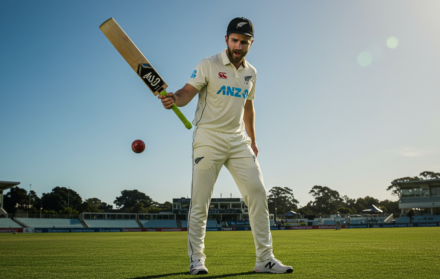
How To Use Data Analytics For Bowling Strategy In Cricket
Data analytics has become an integral part of various fields, including sports. In cricket, data analytics is being increasingly utilized to gain insights and make informed decisions. Specifically, for bowling strategy, data analytics plays a vital role in helping teams analyze and optimize their performance on the field.
Understanding the importance of bowling strategy is crucial in cricket. It involves various factors such as pitch conditions, player skills, and opposition strengths and weaknesses. A well-planned bowling strategy can significantly impact the outcome of a match.
Data analytics comes into play by collecting and analyzing bowling data. This includes key performance metrics such as line and length, variations, and economy rates of bowlers. By utilizing innovative techniques like bowling heatmaps, teams can identify patterns and make data-driven decisions in real-time.
The benefits of using data analytics for bowling strategy are numerous. It leads to improved player performance by identifying areas of improvement and suggesting suitable strategies. It enhances decision-making on the field, providing valuable insights for captains and coaches. It offers a competitive advantage over opponents by uncovering hidden patterns and trends.
Implementing data analytics in bowling strategy requires collaboration between coaches and analysts. Coaches provide their expertise and domain knowledge, while analysts offer insights derived from data. Training players to interpret and use data effectively is essential for successful implementation.
However, it’s important to acknowledge the challenges and limitations of data analytics in bowling strategy. The availability and quality of data can pose hurdles, especially in domestic or lower-level games. Over-reliance on data over intuition can sometimes lead to suboptimal decision-making.
Looking ahead, the future of data analytics in cricket looks promising. Advancements in technology and the integration of artificial intelligence and machine learning are expected to further enhance the capabilities of data analytics in cricket. This opens up exciting possibilities for teams to gain a competitive edge and unlock new insights into the game.
What is Data Analytics in Cricket?

Data analytics in cricket refers to the use of statistical and analytical techniques to analyze cricket data and extract meaningful insights. This involves collecting data on various aspects of the game, such as player performance, strategy, and match conditions, and using advanced algorithms to identify patterns and trends.
Data analytics is important in cricket as it helps teams make informed decisions, optimize strategies, and improve player performance. It provides valuable insights into player strengths and weaknesses, helps in developing effective bowling strategies, and enables teams to gain a competitive advantage.
{ro-tip: By utilizing data analytics in bowling strategy, teams can analyze opponent weaknesses and tailor their approaches accordingly.
Why is Data Analytics Important in Cricket?
Data analytics in cricket is crucial for teams to gain a competitive edge and make informed decisions. By analyzing data from matches, training sessions, and players’ performances, teams can identify patterns, trends, and insights that can shape their strategies.
It helps in player selection, understanding opponents’ strengths and weaknesses, and optimizing batting and bowling strategies. Data analytics provides objective and evidence-based information, reducing reliance on intuition and guesswork.
It enables teams to measure and track player performance, identify areas for improvement, and make data-driven decisions on the field. Data analytics plays a vital role in enhancing team performance and achieving success in cricket.
Bowling Strategy in Cricket
In the world of cricket, the art of bowling is as crucial as it gets. So, how can data analytics revolutionize bowling strategy? Let’s explore the exciting realm of bowling strategy in cricket and uncover the secrets behind its success.
From understanding the significance of bowling strategy to examining the factors that shape it, this section will take you on a thrilling journey through the game’s most strategic aspect. Get ready to step up your cricket knowledge and discover the power of data-driven bowling tactics.
Understanding the Importance of Bowling Strategy
Understanding the importance of bowling strategy in cricket is crucial for any team aspiring to succeed. A well-planned bowling strategy can have a significant impact on the outcome of a match. It involves analyzing the strengths and weaknesses of the opposing team’s batsmen, studying pitch conditions, and considering various factors that can influence the game.
By comprehending the significance of bowling strategy, teams can make informed decisions about their choice of bowlers, field placements, and tactics during the game. This knowledge enables teams to adapt and strategize effectively, increasing their chances of taking wickets and restricting the opposition’s runs.
Factors Influencing Bowling Strategy
Factors influencing bowling strategy in cricket are numerous. They include the condition of the pitch, the skill level and style of the bowler, the strengths and weaknesses of the batsmen, the match situation, and the team’s overall game plan. The pitch condition is of utmost importance as it determines the line, length, and pace at which the bowler should bowl. It is essential for the bowler to assess the pitch condition before deciding on their approach.
The bowler’s skill level and style are crucial factors that shape their strategy. Depending on their abilities, bowlers can employ different variations and tactics to outsmart the batsmen. It is necessary for bowlers to understand their own strengths and weaknesses, and adjust their strategy accordingly.
Furthermore, in order to effectively formulate a plan, it is essential to analyze the strengths and weaknesses of the batsmen. Recognizing their vulnerabilities allows bowlers to exploit them to their advantage. This strategic assessment becomes even more important when considering the match situation.
The match situation, including the target to defend or chase, also plays a significant role in the bowling strategy. Bowlers need to adapt their plans based on the required outcome. For instance, if their team needs to chase a high target, they might choose a more aggressive approach. Conversely, if they need to defend a low target, a more defensive strategy could be employed.
The team’s overall game plan and the captain’s decision-making further shape the bowling strategy. The captain’s preferences and tactics influence the overall approach taken by the team’s bowlers. It is important for the bowlers to align their individual strategies with the team’s game plan.
Using Data Analytics for Bowling Strategy

Using data analytics for bowling strategy in cricket has revolutionized the way teams approach their game plans. In this section, we will explore the power of data analytics in enhancing a team’s bowling strategy.
From collecting and analyzing bowling data to identifying key performance metrics for bowlers, we’ll uncover the secrets behind making crucial decisions on the field. We’ll also delve into the effectiveness of utilizing bowling heatmaps to gain a competitive edge. Get ready to discover the untapped potential of data-driven tactics in the world of cricket.
Collecting and Analyzing Bowling Data
To effectively analyze and improve bowling strategy in cricket, the process of collecting and analyzing bowling data is absolutely essential. This crucial process involves gathering data on various aspects of a bowler’s performance, including line and length, speed, swing, and spin. The data can be collected through video analysis, wearable sensors, or specialized tracking systems, ensuring the accuracy of the information.
Once this valuable data is collected, it undergoes analysis using statistical methods and visualizations, enabling the identification of patterns and gaining insightful information. With the help of this comprehensive information, coaches and analysts are able to make well-informed decisions and customize training programs to enhance the performance of the bowlers.
Consequently, collecting and analyzing bowling data plays a pivotal role in allowing teams to optimize their strategies and acquire a competitive advantage over their opponents.
Identifying Key Performance Metrics for Bowlers
Identifying key performance metrics for bowlers is crucial in data analytics for cricket. These metrics help in evaluating the effectiveness of bowlers and making informed decisions for strategy development.
- Wickets taken: This metric measures the number of batsmen dismissed by a bowler, indicating their ability to take crucial wickets.
- Economy rate: It quantifies the number of runs conceded by a bowler per over, reflecting their ability to restrict the opposition’s scoring.
- Dot ball percentage: This metric shows the percentage of deliveries where the batsman fails to score, indicating a bowler’s ability to create pressure.
- Strike rate: It measures the average number of balls required by a bowler to take a wicket, indicating their ability to make breakthroughs.
- Variation effectiveness: This metric evaluates the success of a bowler’s variations, such as swing, spin, or pace changes, in deceiving and dismissing batsmen.
The importance of identifying key performance metrics for bowlers can be exemplified by the story of Jasprit Bumrah, an Indian bowler. His exceptional economy rate, ability to take wickets at crucial moments, and accuracy with yorker deliveries have made him one of the most successful and sought-after bowlers in international cricket.
Utilizing Bowling Heatmaps
Utilizing bowling heatmaps is a valuable tool in data analytics for cricket bowling strategy. The utilization of bowling heatmaps allows teams to visually display areas where bowlers are most successful or unsuccessful in taking wickets.
By analyzing these heatmaps, teams can identify patterns and make data-driven decisions on field placements and bowling tactics. For example, if a heatmap shows that a bowler consistently takes wickets by pitching the ball in a particular area, the captain can strategically place a fielder in that zone to increase the chances of a catch.
The utilization of bowling heatmaps helps teams maximize their bowlers’ strengths and exploit their opponents’ weaknesses.
Pro-tip: Regularly update and analyze heatmaps to adapt strategies to changing conditions and opponents’ tactics.
Benefits of Using Data Analytics for Bowling Strategy

Discover how this game-changing approach enhances player performance, sharpens decision-making on the field, and ultimately gives teams a competitive edge over their opponents. Brace yourself for surprising insights, mind-boggling stats, and a whole new level of strategic bowling that will revolutionize the way you see the game.
Ready to explore the untapped potential of data in cricket? Let’s dive right in!
Improved Player Performance
Improved player performance in cricket can be enhanced by effectively utilizing data analytics in bowling strategies. Here are several ways in which data analytics can contribute to improving player performance and overall gameplay:
- Identification of strengths and areas for improvement: Utilizing data analytics helps in identifying the specific areas where a bowler excels and those that need further development. This valuable information allows coaches to tailor training sessions to address the specific needs of each player.
- Precise decision-making: Analyzing historical data enables bowlers to gain insights into their opponents’ weaknesses. This knowledge empowers them to make well-informed decisions during matches, thereby increasing their chances of success.
- Tracking performance metrics: Data analytics allows players and coaches to monitor and analyze performance metrics over time. This process helps identify trends and areas of improvement, enabling them to focus on enhancing performance in those specific aspects.
- Optimizing strategies: Carefully studying a bowler’s data enables the development or adjustment of strategies that maximize their strengths. By capitalizing on these strengths, bowlers can achieve improved performance on the field.
Pro-tip: While data analytics is an invaluable tool, it is important to remember to consider the context of the game and rely on intuition and experience when making decisions.
Enhanced Decision Making on the Field
Enhanced decision making on the field is a crucial benefit of using data analytics in cricket bowling strategy. Here are key aspects that contribute to better decision making:
- Real-time insights: By harnessing the power of data analytics, bowlers can gain real-time information about the opposition batsmen’s weaknesses and strengths, allowing them to adapt their strategies accordingly.
- Trend analysis: Through the analysis of historical data, bowlers can identify patterns in batting approaches and adjust their tactics accordingly, leading to enhanced decision making.
- Player performance evaluation: The utilization of data analytics enables coaches to evaluate the performance of individual bowlers, which then facilitates informed decisions about team selection and bowling order, promoting enhanced decision making on the field.
- In-match adjustments: By analyzing live data during matches, bowlers can swiftly make adjustments to their line, length, and pace based on real-time insights, resulting in enhanced decision making on the field.
Competitive Advantage over Opponents
- Analyzing opponents’ weaknesses to gain a competitive advantage over opponents is crucial in cricket. By studying data on the opposing team’s bowlers, batters, and fielding strategies, teams can identify weaknesses to exploit.
- Data analytics can help teams strategize game plans to gain a competitive advantage. These game plans are tailored to exploit opponents’ vulnerabilities while capitalizing on their own strengths.
- Teams can optimize player selection using data analytics. This involves determining the best player combinations and substitutions based on the opponents’ strengths and weaknesses, which provides a competitive advantage over opponents.
- Analyzing past performances can help teams identify match patterns and gain a competitive advantage. By recognizing patterns that opponents might follow, teams can plan strategically to counter them.
- Incorporating data analytics allows teams to adapt in real-time and gain a competitive advantage. Continuously monitoring and analyzing data during matches enables teams to make tactical adjustments and quickly respond to changing situations.
Implementing Data Analytics in Bowling Strategy

When it comes to implementing data analytics in bowling strategy, collaboration between coaches and analysts plays a crucial role. But that’s not all! Another key aspect is training players to interpret and effectively use the data at hand.
This combination of teamwork and data-driven decision-making can revolutionize the way bowling strategies are developed and executed in the game of cricket. So buckle up, because we’re about to dive into the fascinating realm where numbers meet athleticism on the cricket field!
Collaboration between Coaches and Analysts
Collaboration between coaches and analysts is of utmost importance when it comes to utilizing data analytics for bowling strategy in cricket. This partnership ensures the effective implementation of data-driven insights into the team’s bowling tactics.
- Regular communication: Coaches and analysts must maintain open lines of communication to exchange ideas, share insights, and discuss strate gies based on the data.
- Data interpretation: Analysts offer coaches valuable insights derived from data analytics, enabling them to make informed decisions about bowling tactics.
- Collaborative planning: Coaches and analysts work together to develop customized bowling strategies for each match, taking into account factors such as the opponent’s batting lineup and pitch conditions.
- Player development: Coaches and analysts collaborate to identify areas for improvement and create training plans to help bowlers enhance their performance based on data analysis.
By fostering collaboration between coaches and analysts, teams can effectively leverage the power of data analytics to optimize their bowling strategy and gain a competitive advantage in cricket matches.
Training Players to Interpret and Use Data
Training players to interpret and use data is paramount for the successful implementation of data analytics in cricket. This necessitates equipping players with the requisite skills to comprehend and utilize the insights derived from data analysis.
To accomplish this objective, a comprehensive training program can be devised encompassing the following elements:
1. Data interpretation: Imparting knowledge to players on how to effectively decipher statistics, graphs, and other visualizations in order to discern patterns and trends in their performance.
2. Statistical literacy: Educating players on fundamental statistical concepts and methodologies employed in data analysis, empowering them to make knowledgeable decisions based on data.
3. Technical skills: Offering training to players on the usage of data analysis tools and software, enabling them to proficiently access and manipulate data.
4. Communication and collaboration: Highlighting the significance of effective communication among players, coaches, and analysts to ensure the seamless integration of data-driven insights into game strategies.
5. Practice scenarios: Creating simulated game situations where players can apply their data analysis skills in making strategic decisions.
By equipping players with the essential knowledge and skills, they can effectively interpret and utilize data to enhance their performance, make informed decisions on the field, and secure a competitive advantage over their opponents.
Challenges and Limitations of Data Analytics in Bowling Strategy
Unearthing the challenges and limitations of data analytics in shaping bowling strategy is no small feat. We’ll plunge into two critical aspects: the availability and quality of data, and the delicate balance between data-driven insights and trusting one’s cricketing intuition.
Brace yourselves for a closer look at how these factors impact the way teams harness the power of data analytics. Get ready to explore the complexities of leveraging data to gain a competitive edge on the cricket pitch!
Availability and Quality of Data
Teams need access to a variety of data sources, including historical records and real-time statistics, to analyze bowlers’ performance effectively. It is also essential to ensure that the collected data is reliable, consistent, and free from errors or biases. Only with the availability and quality of data can teams harness the full potential of data analytics in shaping their bowling strategies.
Over-reliance on Data over Intuition
Overdependence on data rather than intuition in cricket can impose limitations. Although data analytics offers valuable insights for formulating a bowling strategy, relying solely on data might disregard vital factors. Intuition, acquired through experience and observation, enables players to react spontaneously and adapt to dynamic situations.
Striking a balance between data-driven analysis and intuition can elevate decision-making on the field. By considering both statistical data and intuitive knowledge, teams can optimize their bowling strategy and maximize performance. This approach ensures a comprehensive decision-making process, capitalizing on the advantages of data analytics while acknowledging the significance of intuition in the game.
The Future of Data Analytics in Cricket

The game of cricket is about to witness an exciting revolution – the future of data analytics in this beloved sport. Brace yourself as we explore the advancements in technology and the integration of artificial intelligence and machine learning that are set to reshape the way cricket strategies are developed.
Get ready to uncover the hidden insights and game-changing statistics that will revolutionize the way teams approach bowling strategies on the cricket field.
Advancements in Technology
Advancements in technology have completely transformed data analytics in the realm of cricket. Through the utilization of cutting-edge tools and software, teams are now empowered to gather, analyze, and interpret vast quantities of bowling data.
The inclusion of high-speed cameras, ball-tracking technology, and wearable sensors has significantly simplified the process of capturing and measuring crucial performance metrics for bowlers. Additionally, the progress made in artificial intelligence and machine learning has given teams the ability to discern patterns and trends within the data, thereby informing strategic decisions made on the field.
This amalgamation of technology and analytics has granted teams a noteworthy competitive edge, resulting in enhanced player performance and improved decision-making capabilities.
Integration of Artificial Intelligence and Machine Learning
The integration of Artificial Intelligence (AI) and Machine Learning (ML) has revolutionized data analytics in cricket. This combination has brought several advancements and benefits to the sport:
- Enhanced decision-making: AI and ML algorithms analyze vast amounts of data, providing insights to make informed decisions during games.
- Improved performance prediction: By analyzing player data, AI and ML can predict performance, helping coaches and players with training and game strategies.
- Better player selection: AI and ML algorithms can assess player performance and potential, aiding selectors in identifying the best players for specific situations.
- Optimized bowling strategy: AI and ML algorithms can analyze opponent data, pitch conditions, and player performance to develop effective bowling strategies.
- Tactical planning: AI and ML can suggest optimal field placements, bowling variations, and game plans based on historical data and real-time analysis.
The integration of Artificial Intelligence and Machine Learning in cricket has opened new frontiers, elevating the sport through data-driven decision-making and strategic planning.




